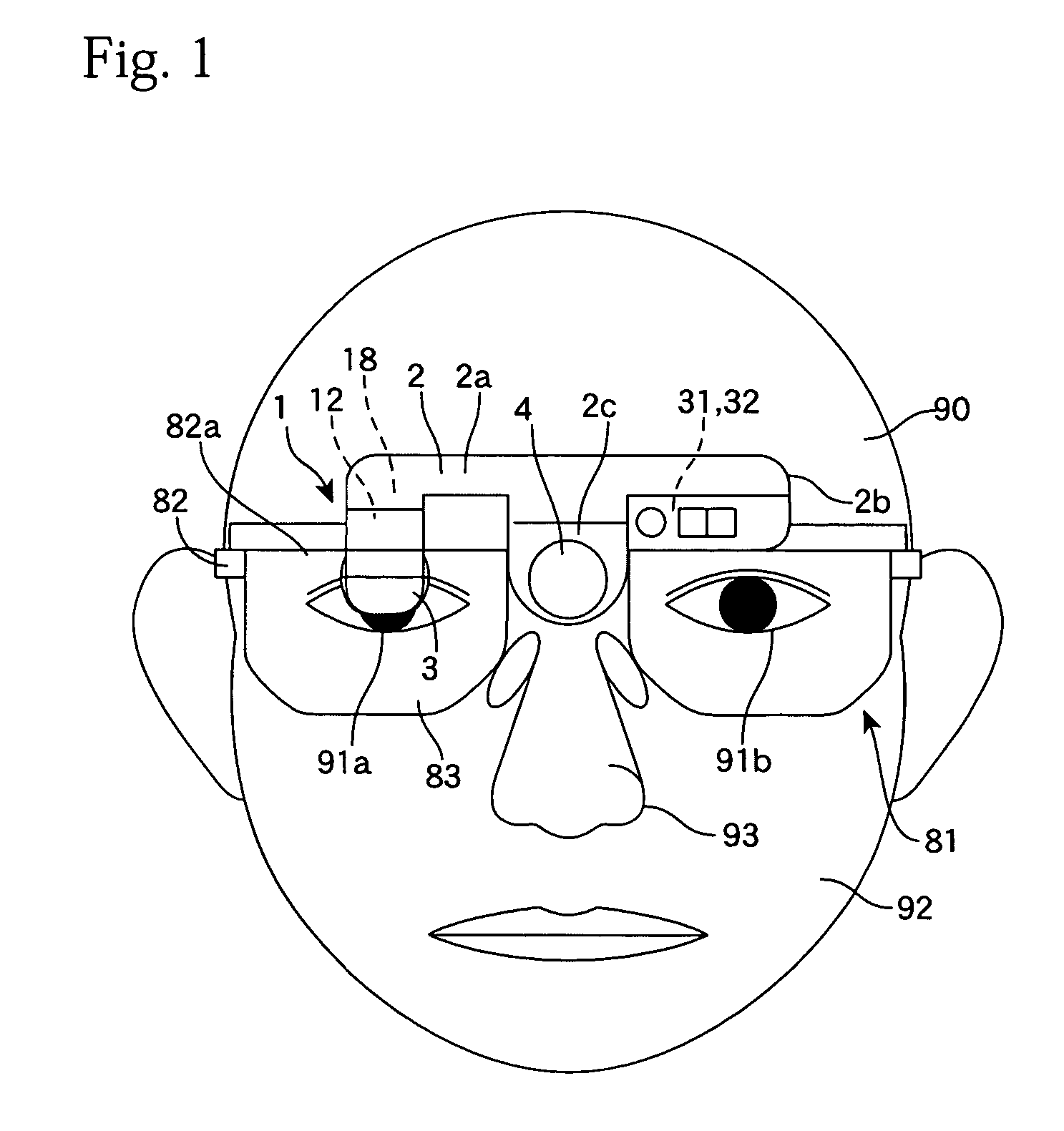Visual aid
a technology of visual aids and auxiliary devices, applied in the field of visual aids, can solve the problems of user's eye movement, major burden, and user's expression is difficult to discern, and achieve the effects of convenient visual aids, small parallax, and sufficient optical paths
- Summary
- Abstract
- Description
- Claims
- Application Information
AI Technical Summary
Benefits of technology
Problems solved by technology
Method used
Image
Examples
Embodiment Construction
[0023]The following describes an embodiment of the present invention with reference to the attached drawings. FIG. 1 shows how a vision assisting apparatus 1 according to the present invention is worn by a user 90. The vision assisting apparatus 1 of the present embodiment is attached to a horizontally extending part 82a of an eyeglass frame 82, and can be worn by the user 90 in the same way as eyeglasses. The vision assisting apparatus 1 has a housing or casing 2 that is shaped in its entirety like the letter “F” that has been rotated by 90 degrees and inverted, with the left side (when looking from the front) being a casing 2a that forms an approximately inversely U-shaped optical path and the right side being a rectangular casing 2b that extends horizontally. An optical path 18 that composes a magnifying optical system 12 of the vision assisting apparatus 1 is housed and / or formed in the left casing 2a that is in an inverted U-shape, and an autofocus module 32 is housed in the ri...
PUM
 Login to view more
Login to view more Abstract
Description
Claims
Application Information
 Login to view more
Login to view more - R&D Engineer
- R&D Manager
- IP Professional
- Industry Leading Data Capabilities
- Powerful AI technology
- Patent DNA Extraction
Browse by: Latest US Patents, China's latest patents, Technical Efficacy Thesaurus, Application Domain, Technology Topic.
© 2024 PatSnap. All rights reserved.Legal|Privacy policy|Modern Slavery Act Transparency Statement|Sitemap



